How to Grow Garlic Start To Finish In 10 Easy Steps
Garlic, in my opinion, is by far the easiest thing to grow. So simple in fact, you can learn how to grow garlic in 10 simple steps. It requires very little attention, rarely fails, and is simple to preserve allowing you to enjoy it all year long.
Keep this gardening 101 close so you can refer to it each fall when it’s time to plant your garlic once again.
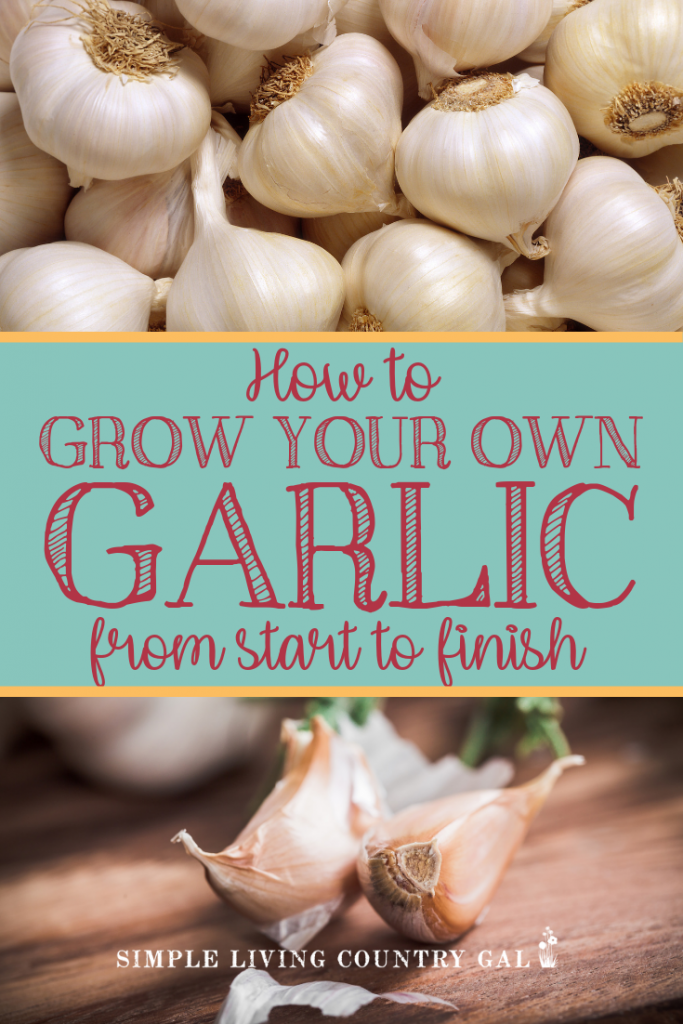
I love growing garlic mainly because of how self-sufficient it is. I can put it into the ground the end of summer and let it do it’s thing over winter giving me fresh shoots come spring.
If you are new to growing garlic, you’ve come to the right place. If you are new to gardening, garlic is the perfect way to get your feet wet. If you are new to canning, I’ve got you covered there as well!
I am going to break things down so it’s super easy and yes…fun too!
How to Grow Garlic in 10 Easy Steps
Gardening is one of those home projects that is a lot of work with just as much reward. Learn the basics of growing a handful of vegetables and you can turn your backyard into a full produce section as you see at a farmer’s market in the summer.
Be sure to grab the FREE Garlic Storage Checklist below!
Most gardens get planted in the spring and harvested at the end of summer. Garlic is different, you plant it in the fall allow it to rest over winter, new shoots pop up in the spring and you tend it over the summer until it is ready to harvest.
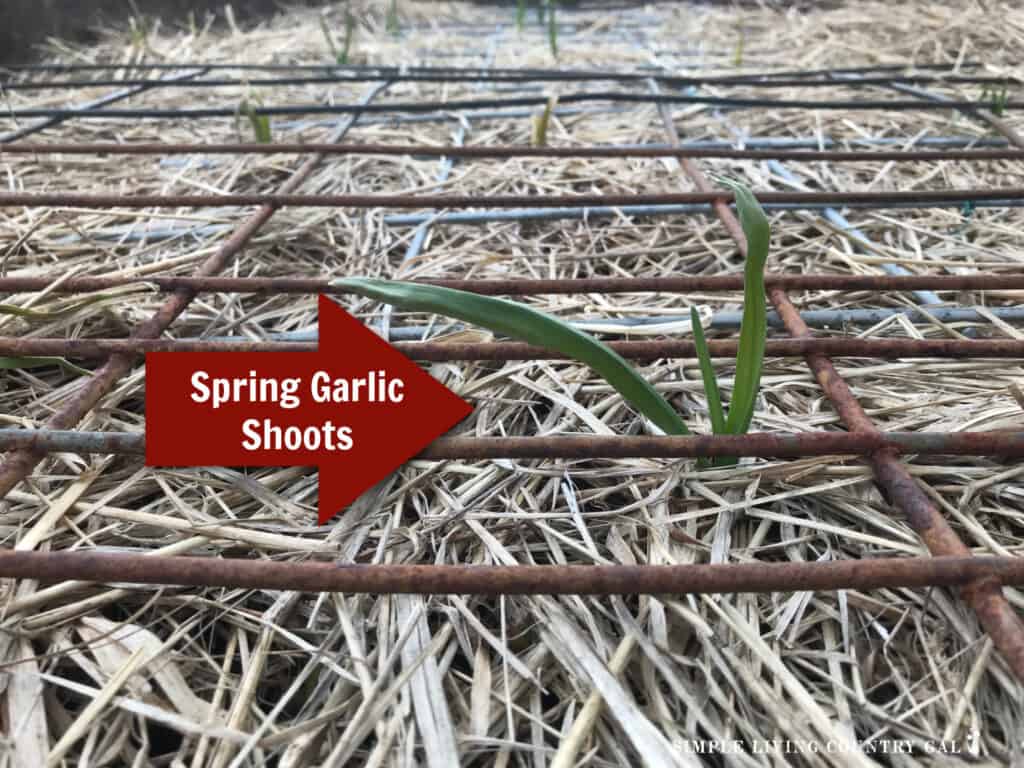
Even better is the fact that once you grow heads, you love the taste of, you will have the seeds you need for every garden going forward. Garlic is one of those amazing plants that keep giving year after year.
Garlic Basics to Know
When it comes to garlic, there are two main varieties of garlic to be aware of: hardneck and softneck.
- The hardneck varieties prefer cold climates. So if you live in an area that has normal to hard winters, you will want to grow hardneck garlic. This is usually zones 1-5.
- Softneck varieties do better in mild climates. If you live in an area that has mild or no winters, then you will want to grow softneck garlic. This is usually zones 8-12.
There are many different types of garlic to consider; you can see them all here. My best advice is to try a few each year until you find what grows the best and which ones you prefer the taste of.
After a few years of experimenting, I found we enjoy Elephant garlic the best and now grow it year after year.
Step #1. Plant Garlic in the Fall
In colder climates like Northwestern PA, where I live, the most important thing to remember about garlic is that it needs to be planted in the fall. Target planting months may vary depending on where you live but the range will be from August-November.
I know some folks say spring is fine for planting garlic as well, but I’ve tried spring planting and was very unsuccessful. Fall planting is definitely the way to go, as it allows the heads to take root before they begin hibernating (in a sense) for the winter.
In our location, our target planting time ranges from late September through early October or before the frosts hit, making the ground too hard to work.
I have even planted them as late as November and they still did well, although not quite as big as I would have liked. The key is to watch your frost dates and try to plant your garlic a week or so before your first frost.
For most areas, you will want to plant your garlic 3-5 weeks before the first frost in the fall.
Garlic Heads for Planting:
Garlic Bulbs Whole, Early Purple Italian Garlic Bulbs, 4 Bulbs, This Garlic is ready for Eating or Planting, Cool Beans N Sprouts


Why does garlic need to be planted in the fall?
Garlic is typically planted in the fall for several reasons:
- Cold Stratification means giving the cloves time for roots to develop using the colder temperatures to promote root growth. The cold triggers growth in a sense, allowing the garlic to develop into a plant.
- Root Development: Planting garlic in the fall gives the cloves time to establish a strong root system before the onset of winter. This ensures the plant will be healthy and thriving and ready to grow when spring arrives.
- Bulb Formation: When garlic grows it does so in two stages. The first stage focuses on the roots and the second stage focuses on the bulb. Planting garlic in the fall gives the bulbs enough time to start growing during the cold months, resulting in larger and healthier bulbs at harvest time.
- Pest and Disease Control: Planting garlic in the fall also helps to deter pests and diseases. The cold temperatures allow the plant to grow without much risk of pests like nematodes and fungal disease which are dormant at this time.
It’s important to note that the exact timing for planting garlic may vary depending on your specific climate and region. Consulting with local gardening resources or agricultural extension offices can provide more specific guidelines for your area.
Keep a note of dates in your gardening journal so you can refer to them each planting season.

Timing is everything
When you plant garlic in the fall, you want to do it before the ground freezes. This will allow the roots to begin growing. Once things freeze, your garlic will go dormant over winter, hibernating until spring arrives and the ground warms up.
Planting before freezing will give your crop a good head start for the growing season. Once the ground thaws, your garlic will continue growing until it is ready to harvest in mid to late summer.
For those of you who live in a warmer area, February to March is the best time for you to plant. I suggest asking local farmers in your area for specific times and advice.
SLCG PRO TIP: Never underestimate the knowledge your local farmers have. I love to talk with our farming friends, and the information I have gotten from them has been invaluable.
They have helped me know the best way to purchase when to harvest garlic, how to grow HUGE onions, and even the best way to hatch eggs with our chickens.
Farmers are your best resource, which I hope you will use as you grow your homestead.
Step # 2. Decide how Much Garlic to Plant
In our home, we eat a lot of garlic, using it in just about every meal. We also give it away as gifts for the holidays (which people love!). Knowing I need this much better helps me to know how much to plant.
Get our list of Homemade Gifts Made Easy for some unique ideas.
When planting garlic, you will want to purchase heads specifically meant for growing in a garden. Each head can then be broken down into individual cloves which you will plant in your garden.
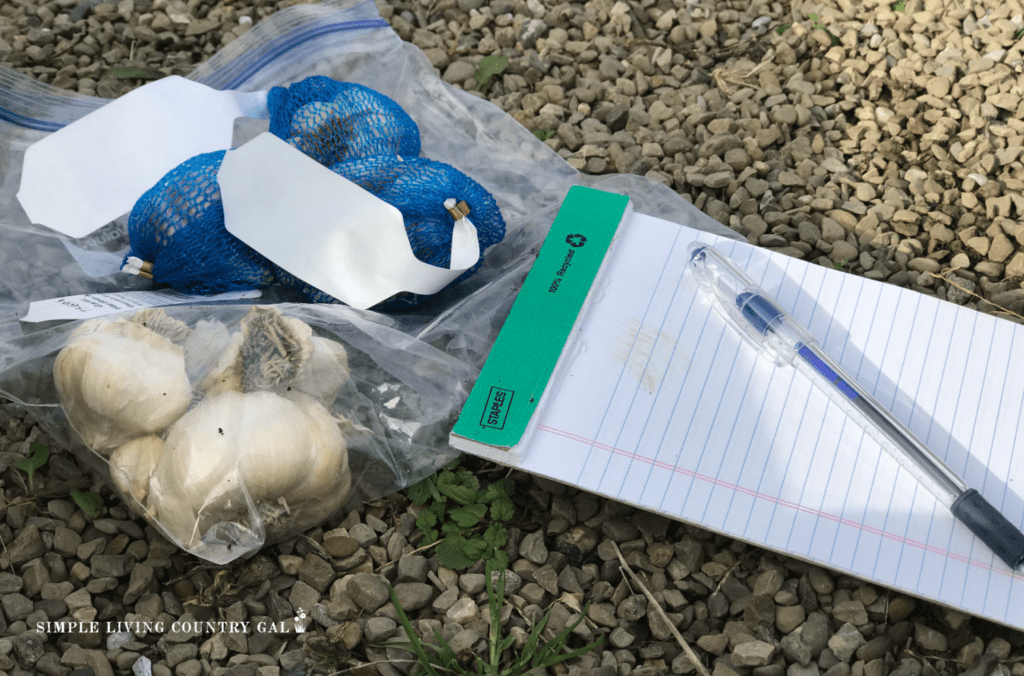
Garlic Math
To help understand how much garlic to plant, we will need to do a bit of math.
First, one head of planting garlic equals 10-15 individual cloves for planting.
Second, one planted clove will yield one full head of garlic at harvest.
That means a single head of garlic will grow 10-15 NEW heads of garlic.
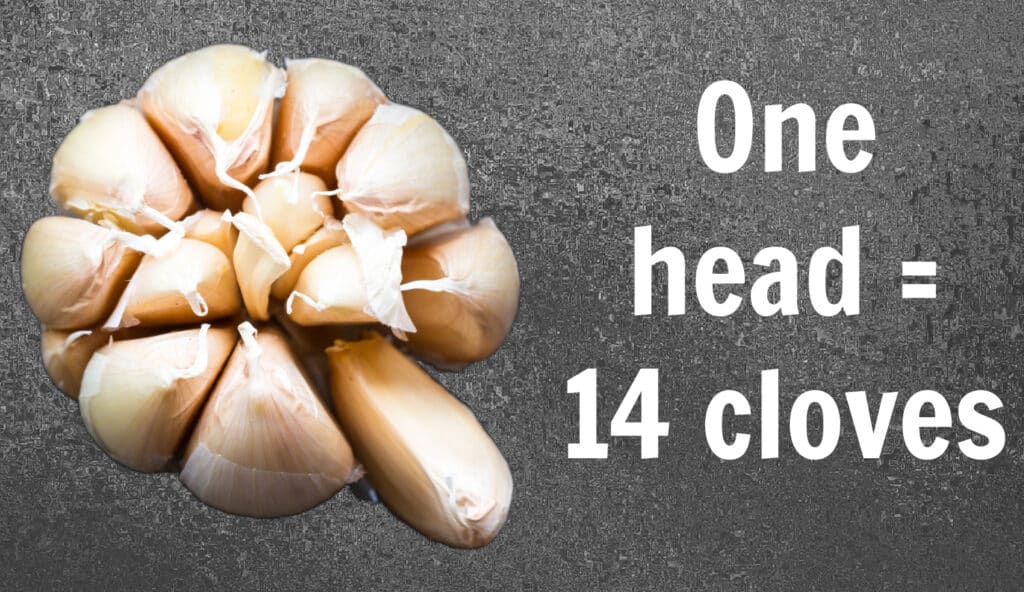
I did not fully grasp this garlic math so in my first year, I planted ten heads worth of cloves. I was literally up to my neck in garlic!!
Step #3. Plant Your Garlic
In our backyard, we use raised beds because it helps keep the soil at the right moisture, giving us a healthier harvest.
Layout Tips
In a 4 x 8-foot bed, I can plant quite a few heads. The good news is that garlic doesn’t need much room to grow. A good rule of thumb is to plant each clove of garlic about 4″ apart and about 2″ deep, laid out in rows.
Garlic Seed Tips
Before you begin planting, be sure you have nice good quality seed garlic. I prefer to purchase our garlic from our local farmers’ market because this will tell me just what does well in our climate.
If you are not sure what garlic is best to grow in your area, ask. Most of your neighbors may have the best advice on what will grow well in your local weather.
Keep the heads intact until you are ready to plant. A few days before planting, break up the heads and allow them to sit with the papery skins on. Store them in a brown paper bag until you are ready to plant.
Spacing and Depth Tips
Using a garden hoe, dig trenches about 2 inches deep and 4-6 inches apart. Follow this list for the best practices for planting garlic cloves.
- Depth: Plant cloves knot side down with papers still on at 2″ deep.
- Spacing: Keep heads 4-5″ apart.
- Rows: Keep rows 12″ apart (less if using raised beds or containers for your garden setup.)
SLCG PRO TIP: Use garden markers to help you remember what variety of garlic you have planted and where. This will allow you to test some of the amazing varieties available to find what you and your family love most.
Planting Tips
When it is time to plant, place each clove in the ground with the root end facing down, This is called the “upright” position.
Once all your garlic is in the row, you can cover it with soil and set your marker in place.
Continue planting each row until all of your cloves are in the ground markers included.
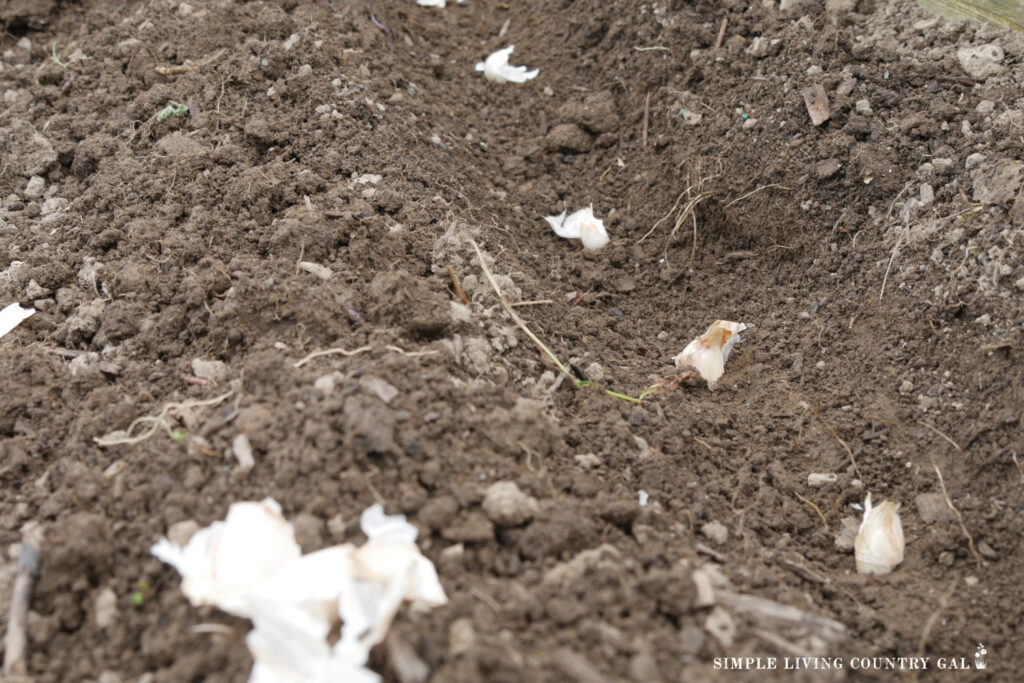
Step #4. Prepare your Garlic Bed for Hibernation
I am sure there is a more technical term for this, but I like hibernation simply because our garlic will be doing that very thing, sleeping over the cold winter before emerging in the spring.
Once all the heads are in the ground, you will want to cover the entire area with mulch. I find straw is the best option here. You can purchase mulch at your local garden center. If you do not have access to straw you can also use dried leaves or cut grass.
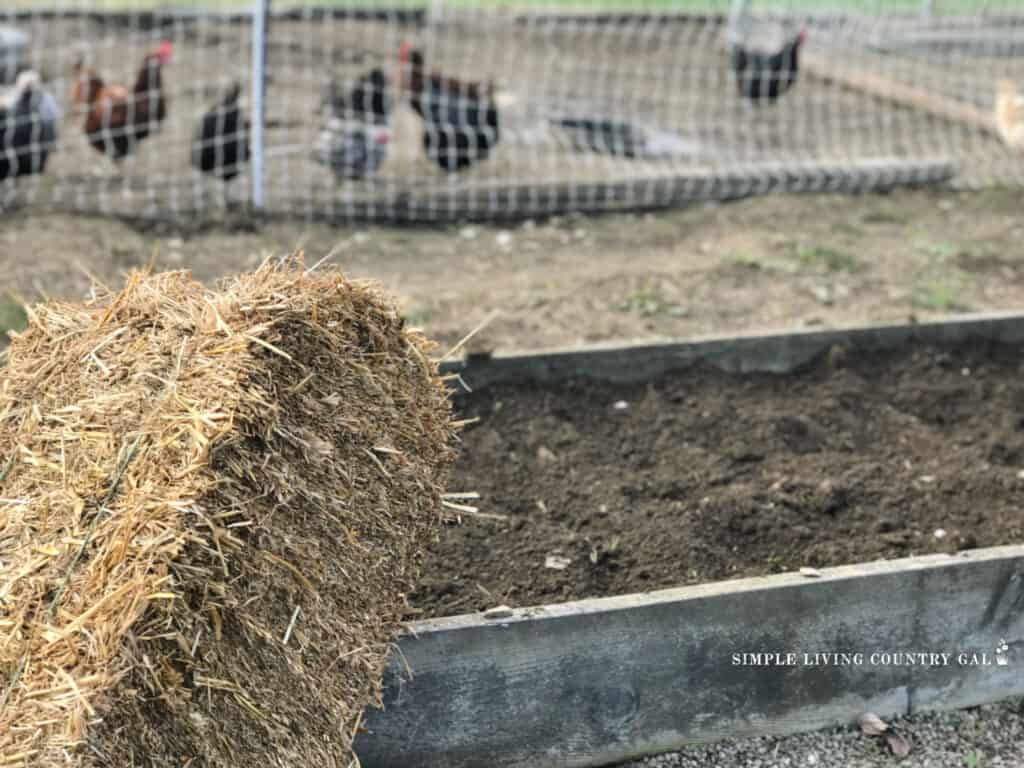
How much you add is up to you and will depend on the weather where you live. Remember, the goal is to protect the planted area but not so much that your shoots have a hard time breaking through the coverage.
Once your mulch is in place, you will need to anchor it down so that it doesn’t blow away during the winter months. A good anchor is something light yet heavy that will allow your garlic to grow through in the spring. This way your shoots can start to emerge until you are able to remove the coverage.
I love to use metal fencing to hold our straw in place. We have a pile of fence scraps that I use each year or you can purchase a new piece of fencing for your garlic bed.
The fencing works in two ways. First, it keeps my chickens deterred, making it more difficult for them to dig up my freshly planted cloves, and second, it keeps the straw from blowing away. Another bonus is the openings give plenty of space for shoots to emerge.
Once the fencing is in place, let it sit all winter and only remove it in the spring.
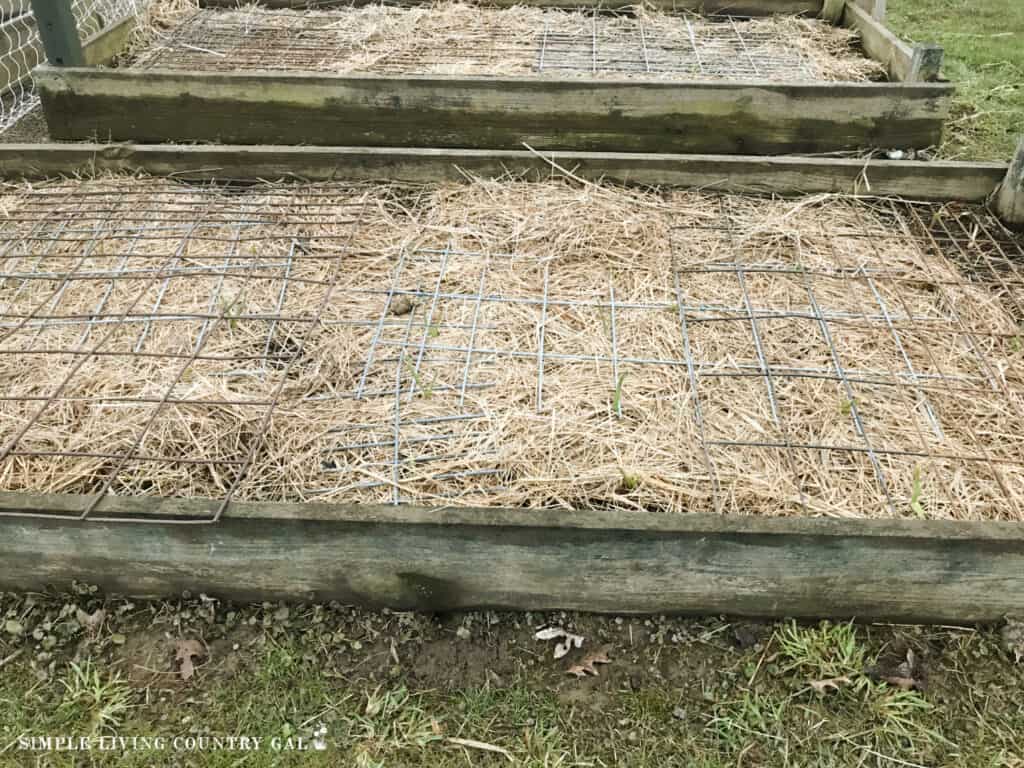
SLCG PRO TIP: Do not use hay to cover your garlic. Hay is not the same as straw for one reason, and this is a reason that is incredibly important.
Hay contains seeds in the cutting, not only from the grass but also from any weeds. If you use hay, you will be adding to your fresh garlic cloves a layer of seeds you will need to weed out in the spring and summer.
READ: WHAT IS THE DIFFERENCE BETWEEN HAY AND STRAW
Step #5. Don’t Do a Thing Until Spring
This might be a bit difficult at first, but leave your newly planted garlic alone until spring. You will not even need to water them unless you are in a drought.
When spring arrives, you will begin to see green shoots emerging from the ground. That is a wonderful site, for sure. At this point, remove any fencing you used to hold the mulch in place as well as some of the mulch, especially if you used quite a bit of it.
Before doing this, however, be sure your weather is warm enough so as to not damage your new plants.
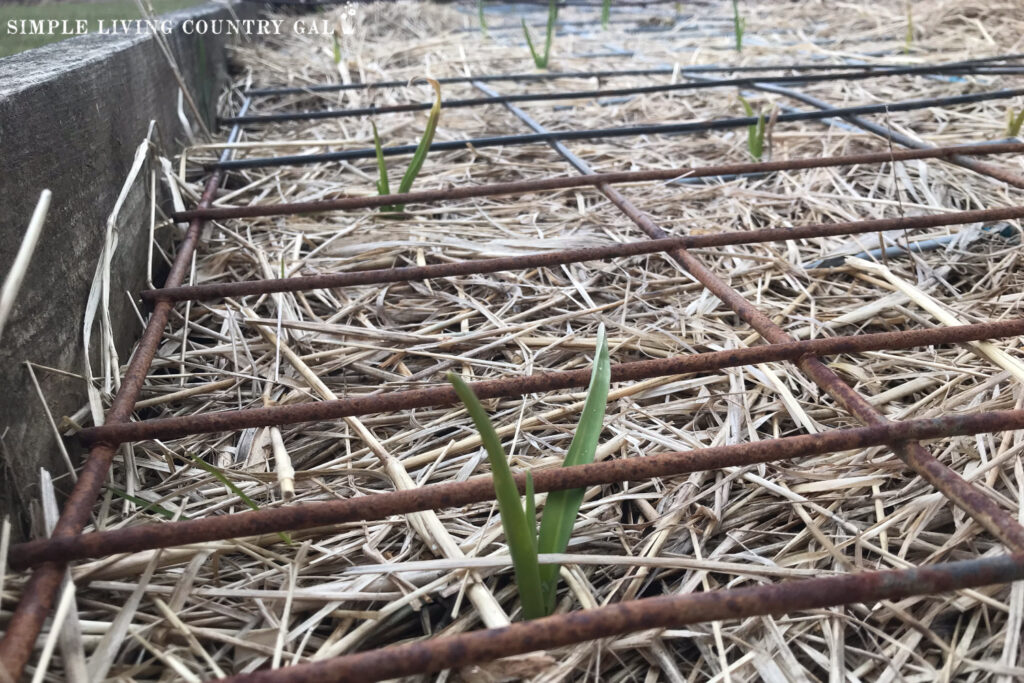
SLCG PRO TIP: Leave some of the mulch from winter in place to help deter any weeds as your garlic grows.
READ: HOW TO USE MULCH TO KEEP WEEDS FROM GROWING
Step #6. Water as Needed
Once you see plants, you will want to start routinely tending your garlic until harvest. This means watering as needed and weeding when necessary.
If you have not done so yet, remove the fencing or other protection. This will help make harvesting easier. If you have chickens nearby, don’t worry about them damaging your plants; they will leave your garlic alone once it is too big for them to bother with it.
Whenever you are watering, get into the habit of checking your plants. Be on the lookout for any issues, searching for pests or signs of disease.
The earlier you catch an issue, the more quickly you can keep it from getting out of hand.
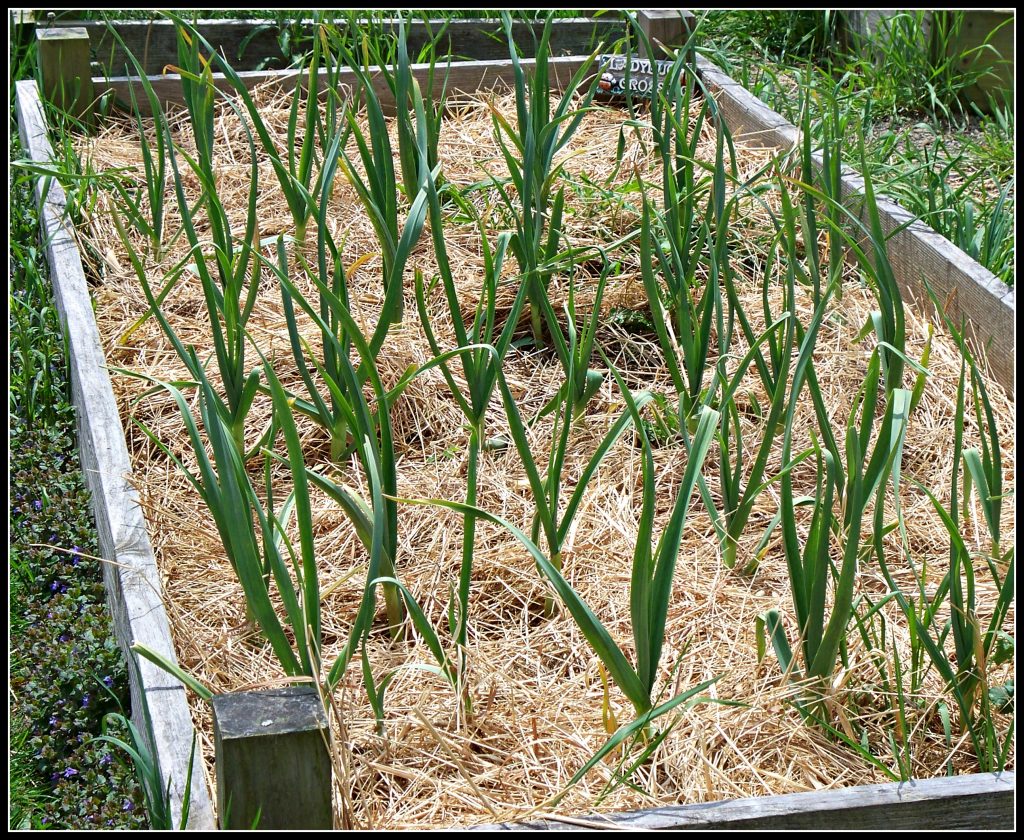
Step #7. Harvest Your Garlic
The type of garlic you plant will determine your harvest time. Usually, our garlic is ready for picking around the end of July. The best way to determine if your garlic is ready to harvest is by looking at the shoots.
Shoots are the part of the plant that is growing out of the ground. They should be about 2-3 feet at this point and begin turning brown and drooping. If they are, this is your cue that it’s time to begin harvesting.
Harvest Tips
Before you harvest, it is best to do a test dig to make sure the heads are ready. I like to dig one of my garlic plants up to confirm I have the right time. If so, the rest can then be dug up as well. If I see things are not quite ready yet, I will usually wait a week before trying again.
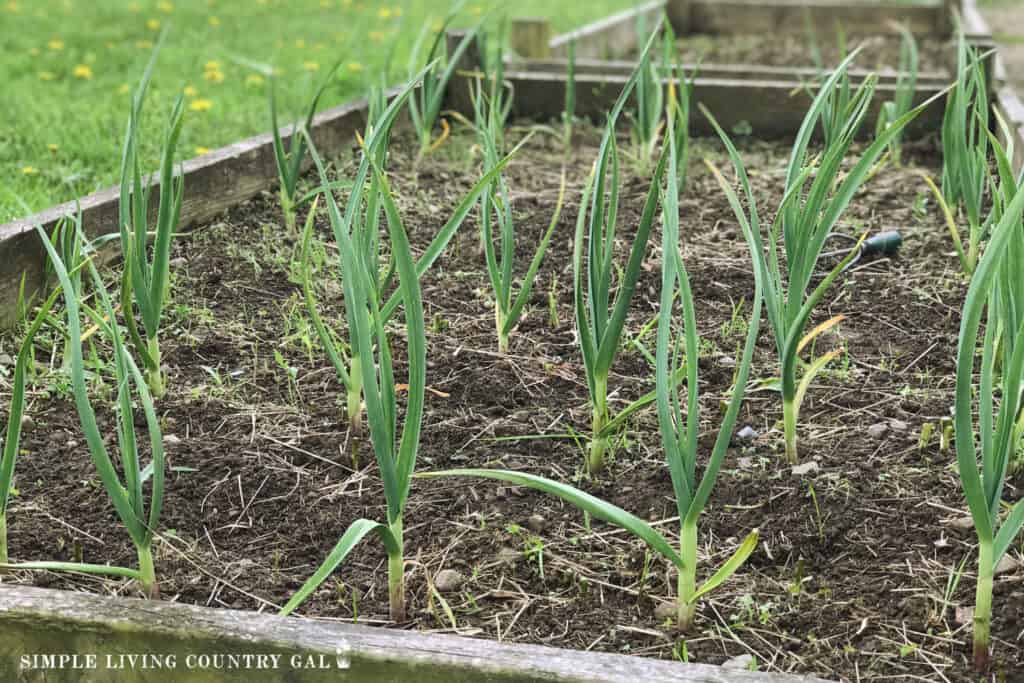
How will you know garlic is ready for harvesting?
There are a few clues to watch for letting you know that it is time to begin harvesting your crop of garlic. The main clue is leaves that are yellow or brown and maybe drooping.
Choose one plant in your crop to dig up and inspect. Remove the garlic from the ground and gently clean any soil with your hands.
Ready Clues:
- The papers are dry, thin, and papery.
- The head is together with light spacing at the top.
Too Early:
- The papers are thin and delicate.
- The head is tight together will little to no spacing.
To Late:
- The garlic head is heavily splitting at the top.
If your head of garlic is split, don’t throw it away. It is still good to use; it just may be dryer than other heads.
From Clove to Stove eBook

It is important to know that garlic does not like to come up easily. That means you will not be able just to pull them out. Remember, your garlic sat and took root all winter, so they are in there….good. This means you will need to dig them up with a shovel. And yes, be prepared for a good workout!
How to dig up garlic.
When digging up your garlic, placing your shovel well out from where you believe the head to be is important.
If you dig too close, you risk slicing into the head and may lose some of your cloves. Also, put your shovel in well below the depth where you think the head is. Until you get the area down, always put your shovel out further and down deeper than you feel you need to go.
It is better to be safe than sorry, when harvesting your first head of garlic.
Once the garlic is picked, do not remove any soil or dirt from the heads. Leaving it in place until it is dry will help to keep the outer papers intact.
Step #8. Let the Garlic Sit So it Can Dry
Before you can take garlic into your kitchen and start cooking with it, you will need to give it time to dry. This will help the dirt that is on the head to dry, making it easier to remove it without risking damage to the papers. I like to dry my garlic in two steps.
Drying Garlic Tips
First, lay your newly harvested plants out in a single layer, allowing them to dry outside. If you have a picnic table this is a good spot to use, however you will want to be sure it is not in direct sunlight.
This initial drying time allows the warm summer air to dry the excess soil on the heads more quickly. After a few days to a week, you should be able to shake off the excess dirt. it is time to shake off the excess dirt.
Next, using your hands, gently rub the heads, letting the soil fall off as you do. If possible, do not remove any papers when doing this.
Once all the excess dirt is removed, gather your garlic in clumps of 3’s and 4’s to hang in a place with good air circulation that is free of dampness.
Since drying garlic can be quite aromatic, I like to hang ours in the barn. This keeps the smell out of the house; however, the barn smells like an Italian restaurant.
The good news is that the goats really don’t seem to mind. 🙂

Let your bundles of garlic hang for at least a week or two. The purpose of drying is to seal up the heads so you can trim them for storage. Watch the tops of your garlic and use them as your guide to know when your heads are ready to trim.
Read my post on How To Cure Garlic for more details.
Step #9. Cut, Clean, and Store
Once the garlic is completely dried, it’s time to get them ready for storage.
- First, cut the stalks off close to the head and remove the outer layers of the husk, leaving a few papers on to keep the heads and cloves protected.
- Next, cut the roots off completely.
- Finally, store them in cloth bags or any other mesh bags that you have lying around your home. I like to save the mesh bags from onions and citrus fruit that I keep throughout the winter just for this purpose.
This is also the time I will pull a few of my best heads out for next year’s planting. Once you find a variety you and your family love, you can save the seed garlic for the next season’s planting.
This should be in a few short weeks since garlic is planted in the fall. Another benefit of growing garlic. To store your seed garlic, place the heads and/or cloves in an open brown bag until you are ready to plant.
Step #10. How to Store Garlic
I will usually keep about ten heads in my pantry for our short-term use, storing them in mesh bags for better air circulation. The mesh allows the garlic to breathe, and it will easily last a couple of months in a dark and cool pantry when stored this way.
For the rest of the garlic, I like to can it in a boiling vinegar solution that, once cooled, can be stored in the refrigerator for up to a year. READ: How to Store Garlic.
Even though this is not a pantry shelf-stable way to preserve garlic, this method will allow me to keep the garlic stored in my refrigerator for up to one year. When ready to use, just remove the number of garlic cloves that are needed and give them a quick rinse to remove the vinegar. And no, the vinegar does not soak into the garlic.
When I first tried this, I was afraid our garlic would have an odd flavor, but I am happy to report there was no vinegar taste at all. I have since fallen in love with this method of preserving garlic, and it is now a part of our annual routine.
There is nothing more satisfying than eating fresh produce from your garden year-round. Garlic, by far, is one of my favorites, and now that you know just how easy it is to grow, dry, harvest, and preserve, I hope it is one of your favorites as well.
Learn how to grow garlic the easiest way so you can fill your pantry with homegrown goodness all year long.

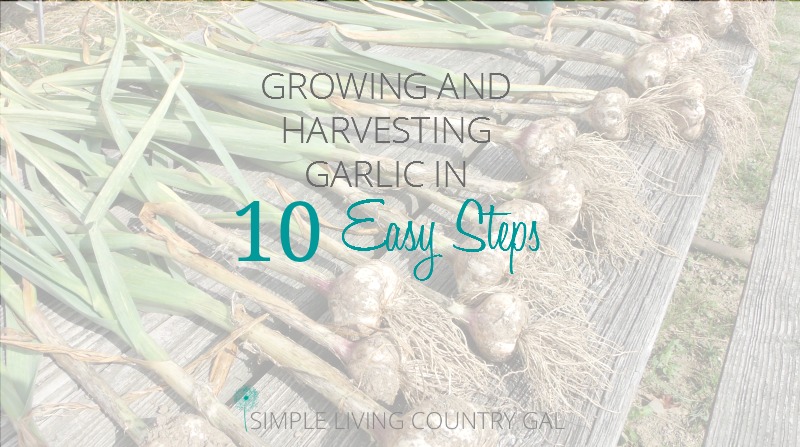




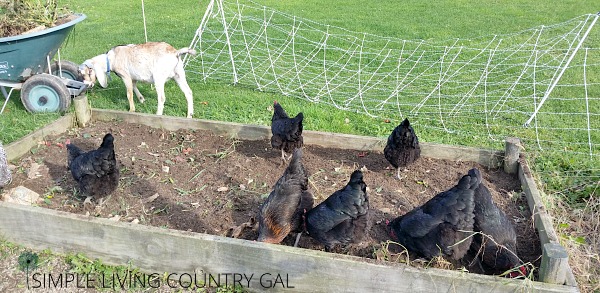
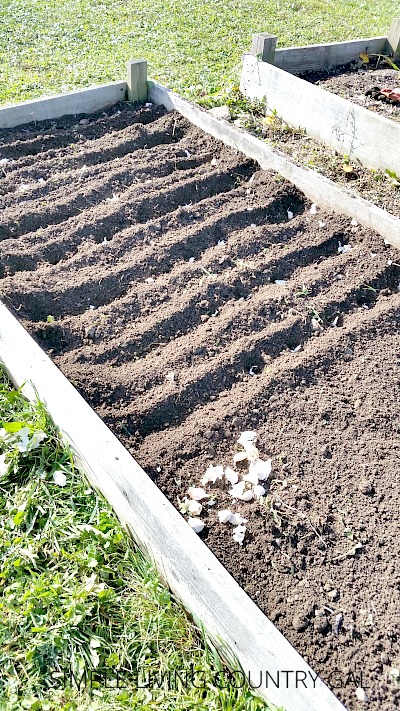
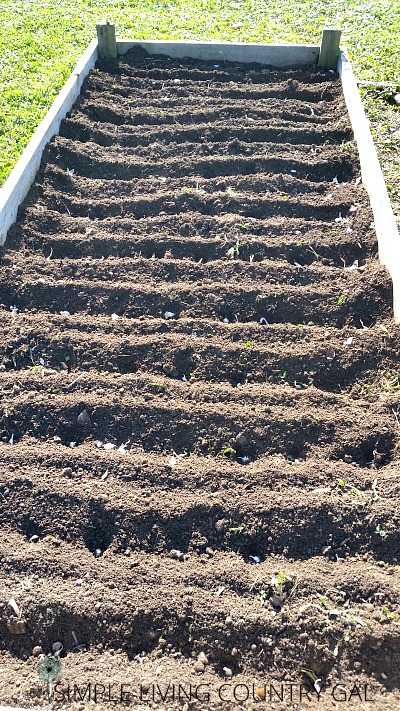



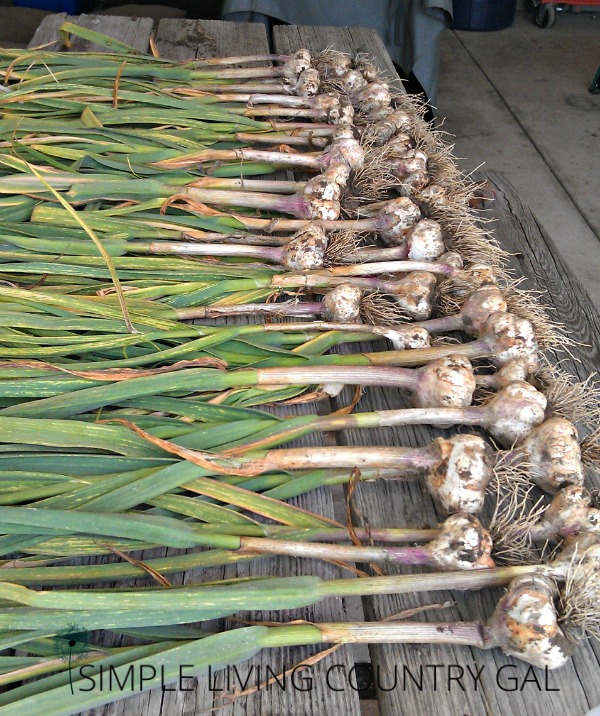
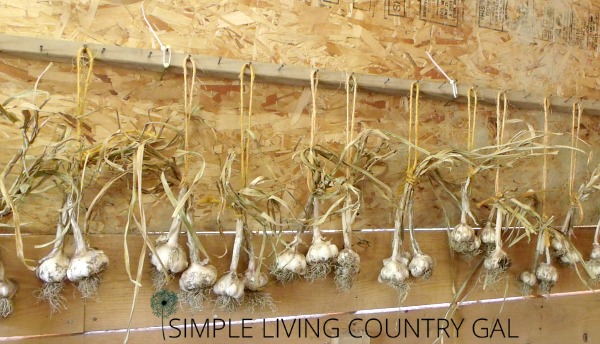
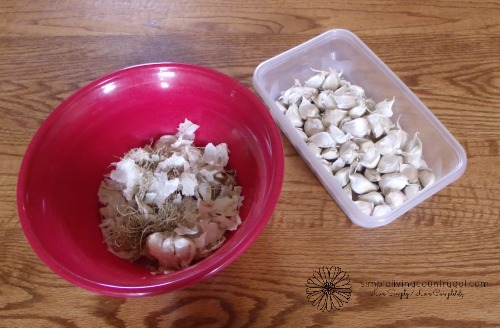
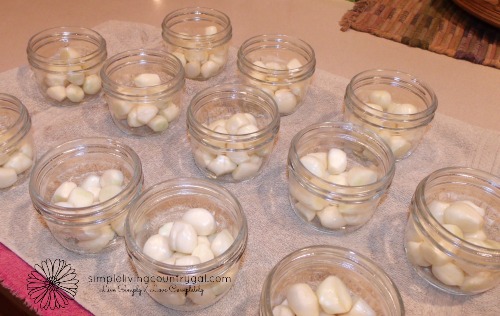
Thank you for such an easy to understand article on growing garlic !
My pleasure! 🙂
Wow! This is great information! I just planted my first garlic this year! I didn’t know you could can it like that! That is great to know! Thank you for sharing at the Our Simple Homestead Hop 🙂 I’m pinning this to read again next year!
Hello!
I am so glad you found the information helpful. I have been canning my garlic that way for 3 years and it has been working great! Just remember to keep it in the fridge :). I just love having garlic ready to use from my garden year round, I know you will love it too!
thank you for the explanation on how to grow your eyes, I have done this only without the protection over it.
Thanks for joining us at Simple Homestead Hop!
This will be my feature post tomorrow 🙂
Sandra,
Thank you so much!! How exciting and fun 🙂
Tracy Lynn
Last year was my first time growing garlic, and it is so easy and so satisfying! Everyone should plant at least a little garlic, don’t you think? Shared and pinned to spread the word!
Michelle,
Thanks so much for sharing! I ADORE garlic and if Yankee candle had a garlic candle I would probably buy it! 🙂
Tracy Lynn
I just planted my garlic about a week ago, so your article is very timely. Thank you for all the great tips! I look forward to making some garlic powder. I love garlic, and it’s a special treat to make some homemade bread and slather it with garlic. Yum! I’m glad I saw your link on the blog hop!
Hi Michelle!
I have never tried making garlic powder, I will definitely have to look that up!
Thanks for ways on planting garlic . I am eager to follow for new guides on how to be successful on garlic gardening. .its fun and exciting activity in home. .
Hi Jean,
Yes, garlic is by far my favorite thing to plant and grow!
Hello – I notice you don’t mention removing the flower head in the spring…do you remove it or not? Thanks. Hoping to plant today!
Hi Bea,
Yes, I do remove the flower (or scapes) in the spring. I know some do not, however, I have found by removing the scapes the plant’s energy goes into the bulb making it bigger and helping it to mature faster. I will add that to my post, thanks for reminding me!
Don’t waste the scaps. They are good in salads and stews. Is the vinegar from the canning safe to use for salad dressings?
To be honest, I am not sure. It is pretty potent though, so I would hesitate to use it. 🙂
I have been searching for a very precise and detailed method to grow garlic! You’re article nailed it!! I can’t wait to grow for the first time!! You’re amazing!!
Aw, thank you, Chelsea!
I am so glad I was able to help. I hope you have much garlic growing success. 🙂
Best wishes,
Tracy Lynn
Hi, Tracy! Super detailed tips. I was wondering if you ever tried using the vinegar soak solution in salad dressing (homemade)? It should have some residual garlic flavor but might need additional vinegar for backup acid power. Anyhow- a thought 😉 Love the post.
Hi, Sandi!
You know, I have been asked this before and to be honest, I haven’t tried it. I do not see why you couldn’t. I will have to give it a try and see how it turns out. 🙂
So happy you stopped by!
Tracy Lynn
Thanks for sharing! I am glad you included storing instructions to!